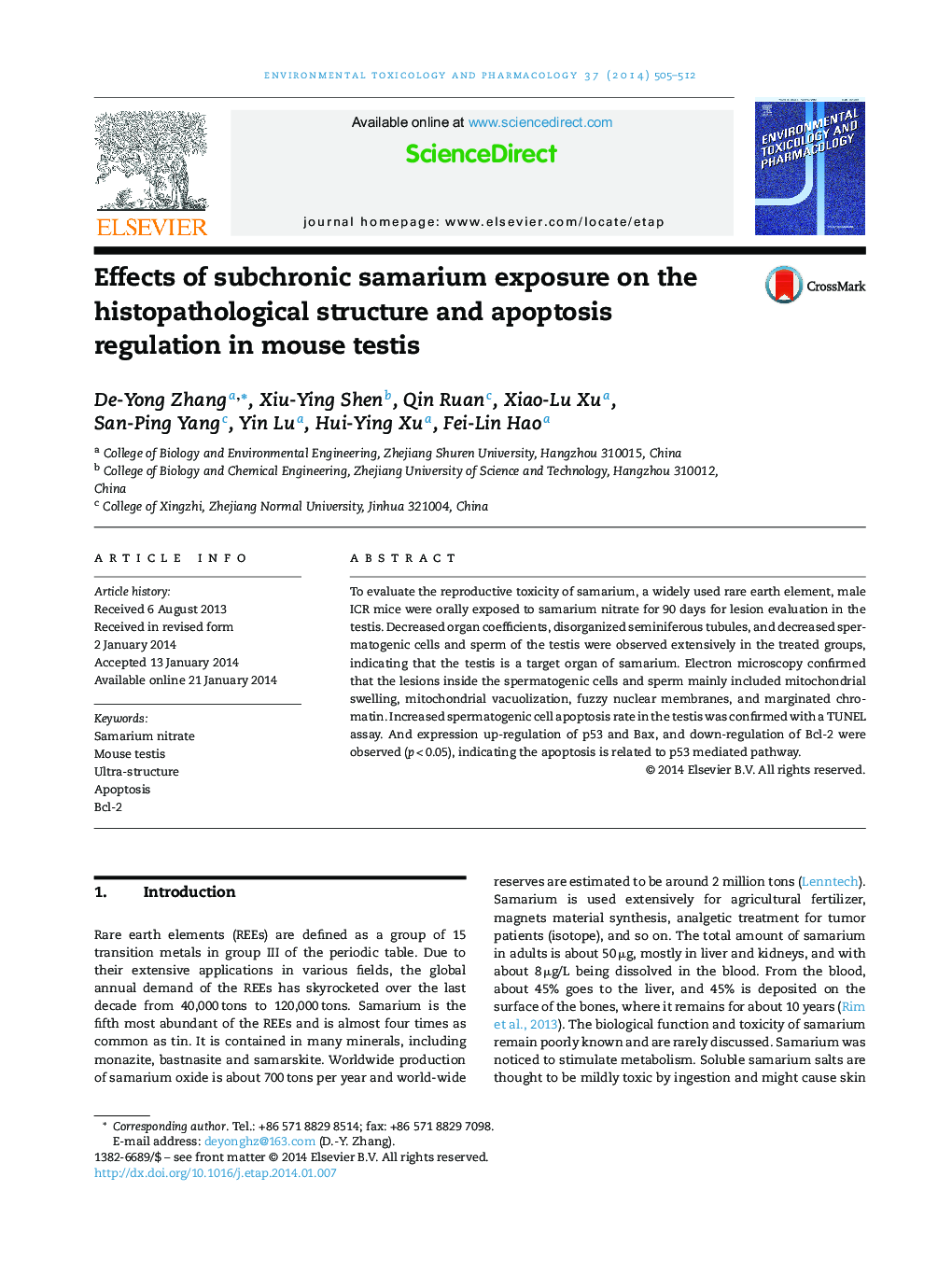| Article ID | Journal | Published Year | Pages | File Type |
|---|---|---|---|---|
| 2582989 | Environmental Toxicology and Pharmacology | 2014 | 8 Pages |
•Ninety days of subchronic exposure to samarium nitrate for mouse is performed for male reproductive toxicity evaluation.•Lesions in testis including disorganized seminiferous tubule, decreased spermatogenic cells, and so on are observed.•The lesions inside the cells involve mitochondria swelling, mitochondria vacuolization, fuzzy nuclear membrane, and so on.•Increased spermatogenic cell apoptosis is confirmed with TUNEL method, as well as changed expression level of Bax and Bcl-2 gene.
To evaluate the reproductive toxicity of samarium, a widely used rare earth element, male ICR mice were orally exposed to samarium nitrate for 90 days for lesion evaluation in the testis. Decreased organ coefficients, disorganized seminiferous tubules, and decreased spermatogenic cells and sperm of the testis were observed extensively in the treated groups, indicating that the testis is a target organ of samarium. Electron microscopy confirmed that the lesions inside the spermatogenic cells and sperm mainly included mitochondrial swelling, mitochondrial vacuolization, fuzzy nuclear membranes, and marginated chromatin. Increased spermatogenic cell apoptosis rate in the testis was confirmed with a TUNEL assay. And expression up-regulation of p53 and Bax, and down-regulation of Bcl-2 were observed (p < 0.05), indicating the apoptosis is related to p53 mediated pathway.
